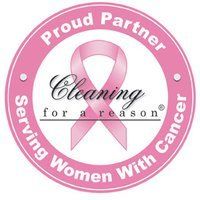HOW TO MINIMIZE ALLERGENS IN YOUR HOME
If you or one of your family members suffers from allergies, you understand how difficult and frustrating it can be to
Make your home allergen-free to keep you and your family healthy.
deal with allergens in your home. Allergens are substances that trigger an allergic reaction, and you or your loved ones may experience sneezing, wheezing, coughing, itchy eyes, swelling of tissues, and other bothersome symptoms. Making your home a refuge against the allergens most frequently found in homes will make living more bearable for you and your family. To minimize allergens in your home, or anywhere, you should keep away from the things that trigger your allergic reactions, which could be insect sprays, perfumes, cigarette smoke, or plants that you may keep indoors during the winter. There are also certain things that you can do specifically to your home to minimize allergens and keep you and your family healthy. The following article from The Housekeeping Channel outlines some steps you can take to turn your home into an allergen-free zone.
According to many allergists, the real cure for sniffing, sneezing and wheezing may be as simple as regular house cleaning. Common household allergens such as dust, dust mites, mold, pet dander, and cockroaches can trigger allergies, explains pediatric allergist Dr. Mary Lasley. "Simple changes in your routine house cleaning can reduce allergies and help your family live more comfortably," she adds.
Steps to Reduce Exposure
1. Control Ventilation and Filter the Air
Opening windows to let indoor allergens out of the home can bring outdoor allergens such as pollen and mold spores into the house. Instead, use heat and air conditioning to clean, circulate and dehumidify the air in the home. Also, using a high-efficiency particulate air (HEPA) filter to remove airborne allergens, such as pet dander, can lessen the amount of circulating allergens. Dust mite and cockroach allergen are generally heavy particles that do not stay suspended in the air and settle quickly, so air filters or air purifiers do not work well for these allergens.
2. Reduce Moisture
Dust mites and molds thrive only in high humidity areas. Maintain the home's relative humidity level below 55 percent by using heat and/or air-conditioning equipment consistently and using a dehumidifier where necessary - doing so will discourage dust mite and mold growth. Repair all roof and plumbing leaks to prevent mold.
3. Regular Cleaning
Cleaning is the best way to reduce allergens. Done regularly, cleaning stops allergens from accumulating, which helps minimize allergy and/or asthma symptoms. Pay special attention to the bedroom since most exposure to dust mites is while sleeping - 60 percent of dust mite allergen is found in mattresses and bedding. In order to control these allergens, wash bed linens in hot water (at least 130 F) weekly and vacuum mattresses regularly. Comforters, blankets and curtains should be washed frequently. Encase pillows, mattresses and box springs in "allergen-control" covers, and freeze or wash stuffed animals weekly in hot water (at least 130 F).
Clean and disinfect wet, warm areas - such as kitchens and bathrooms - weekly to stop mold growth.
Smooth floors should be vacuumed, dusted and wet mopped weekly. When sweeping, take care not to circulate dust from the floor into the air.
Vacuum carpet and rugs at least once a week - twice a week in bedrooms and high-traffic areas. Use a well-functioning vacuum cleaner that has adjustable brushes, and bears the Carpet and Rug Institute's Seal of Approval (SOA). These are vacuum cleaners that have been tested for and meet strict standards for removing soil and containing the dust within the bag and the vacuum cleaner. Vacuum cleaners may produce dramatically different cleaning results and impact on the indoor environment. The SOA program endorses only vacuum cleaners that perform each of the following three tasks well: soil removal, dust containment (without putting the dust back into the air) and carpet appearance retention.
Vacuum upholstered furniture regularly, and clean hard furniture with a damp cloth. A damp cloth should be used on window treatments, windowsills and window frames, ceiling fans, light fixtures, and storage units as well. Dust also can be reduced by storing books and knick-knacks in closed cabinets - doing so leaves fewer places for dust to settle and makes cleaning easier.
Your allergist/immunologist can provide you with more information on allergies. For further information on carpet go to the Carpet and Rug Institute's Web site, www.carpet-rug.com.
If you contact your allergist or immunologist, they will be able to determine the source of your allergies, and then decide the best course of action to take for minimizing allergens in your home. You will need to limit your exposure to the particular allergens that you are allergic to, and then begin to make appropriate changes within your home. You may need to inspect your house for leaks, as allergens, mice, and cockroaches can make their way inside your home through small holes and cracks.
Carpets are the perfect haven for dust, dust mites, and pet dander; therefore, it might also be a good idea to consider changing your carpet to a hard floor such as hardwood, vinyl, laminate, or ceramic to minimize the allergens that are affecting you and your family. If changing your carpeted flooring is not an option, then you should be sure to have the carpet cleaned regularly for a deep, thorough cleaning that vacuuming will not achieve. You may not be able to remove all traces of allergens in your home, but if you follow these guidelines then you will successfully minimize the allergens in your home for a healthier, happier family environment.



